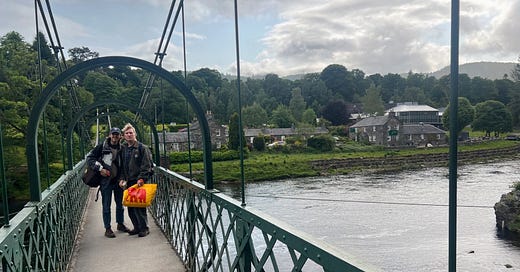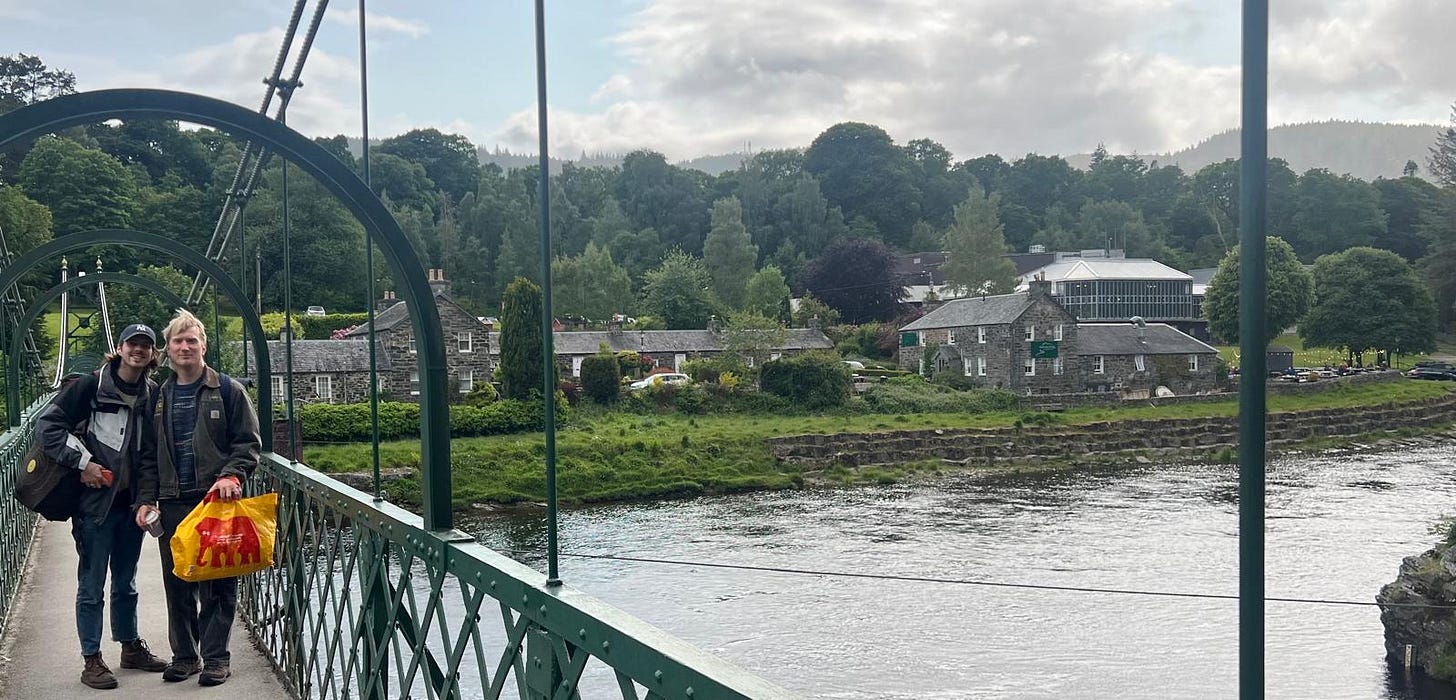An evening at the theatre with Nan Shepherd
How should the play at Pitlochry Festival Theatre represent the writers life?
ON a mild summer evening last week, travelling down from the Highlands by train, I suggested we stop off at the Pitlochry Festival Theatre to see Nan Shepherd: Naked and Unashamed. This was partly because I love this magical little theatre, in a woodland glade overlooking the river Tummel, and partly because I was keen to know more about the author’s life.
Like all good evenings at the theatre, ours ended with an impassioned discussion about what we had seen. Two of our party were moved by the play - but one was angered by the narrative shape it gives to Nan’s life.
Nan, whose youth was in the shadow of the First World War, lived and died an Aberdeenshire quine. A lecturer in English at Aberdeen College of Education for four decades, she cared for her housebound mother, escaping whenever she could into the Cairngorm mountains. She is best remembered for her love letter to them, The Living Mountain.
Unlike male mountaineers who tend to focus on summits conquered, Nan preferred to flit about, exploring what she called the mountains’ inside - the hidden places, the coires, crevices, and hollows. She sought out waterfalls, rushing burns and high lochans where she loved to swim. The forthcoming book about wild swimming I have co-authored Take me to the River opens with a quote from her:
This plunge into the cold water of a mountain pool seems for a brief moment to disintegrate the very self; it is not to be borne: one is lost: stricken:annhilated. Then life pours back.
The nature writer Robert Macfarlane placed The Living Mountain firmly at the top of the tree of nature writing in his foreword to the 2011 edition. It became a surprise best-seller, and since then, Nan has won a devoted following amongst outdoor types. Many of those who filed into the auditorium alongside us were wearing Goretex and carrying their belongings in daysacks.
The play, by Richard Baron and Ellie Zeegen, moves between scenes in Shepherd’s life - a care home, her study, a forest clearing, a lecture hall. At the back some pallets are arranged in the shape of a mountain. As the scenes change, one of the actors chalks the year on a large classroom blackboard. That seems like a big ask my theatre-directing companion Brad commented - and there was a mistake at one point though it didn’t really matter.
I found Susan Coyle’s performance, switching between being a child introduced to the forest by her father, to a fuddled old lady in the care home, moving. By the end of the play, as she reemerges into the forest she loves so well, I was greeting, as was one of my companions.
The other was angered by the amount of time the play gives to Shepherd’s unrequited love for the philosopher John Macmurray (Tony Blair is a fan of his), who was married to her best friend Betty Campbell. It portrays the pair as lovers and makes Shepherd’s eventual rejection by Macmurray a defining moment.
Is this a fair reading or does it force a rich and complex reality into a facile template, hinging Nan’s accomplishments onto a cliched view of romantic love? In other words, is it saying that Nan fell in love with nature because she couldn’t get a man? Were Nan and Macmurray ever even actually lovers?
The Macmurrays apparently had an open marriage and Shepherd was a modernist who admired the bedhopping Bloomsbury set. But there is nothing in either party’s writing to say that John and Nan’s relationship was physical. This relatioinhsip is given space which Nan’s important friendships with Betty and other women, many of them also poets and writers, are not - perhaps because this piece is a two hander with Adam Buksh playing the male roles.
I thought my companion’s analysis was interesting - but a less conventional structure might have made for a less entertaining show. I believed in the painful love triangle -whether it was factually accurate or no. Young people today may think they have invented polyamory but those modernist cats were well ahead of them.
My own issue with the play was a minor one - that Coyle didn’t attempt a Doric accent but adopted with a generic Highland lilt. I was able to put that aside, however, and admit that it may suit the tourist crowd that is Pitlochry’s main audience. (1)
I am writing this heading north. Changing trains at Perth, I met an old friend and neighbour on his way to Pitlochry to see the play for a second time. He loved it and is surprised it has not been picked up by an Edinburgh venue. The love scenes were just part of a bigger story, he thought. For him, The Living Mountain is an inspirational book which answers the question - how should we live?
My friend sees Nan as one of very few writers who is able to convey a sense of herself as part of nature, not separate from it, not looking down on it, but in it. “She gets that across”, he said, touching his chest. Picking up his alpine knapsack, he jumped off the train at Pitlochry to walk across the metal footbridge over the Tummel to the Saturday matinee.
(1) My cousin Prue contacted me to say that Nan Shepherd was a friend of her grandparents. Prue recalls meeting her as a child and she didn’t speak in Doric.
This piece was amended shortly after publication to correct the spelling of actor Susan Coyke’s name. Sorry for the error.




Nice reading yet again. Has made me want to read some Nan as well as the forthcoming Take Me to the River (inspired title) even though you'll never catch me jumping into an icy pool.
Brilliant synopsis. Thank you.
It’s a shame that the play is not being shown in Edinburgh.